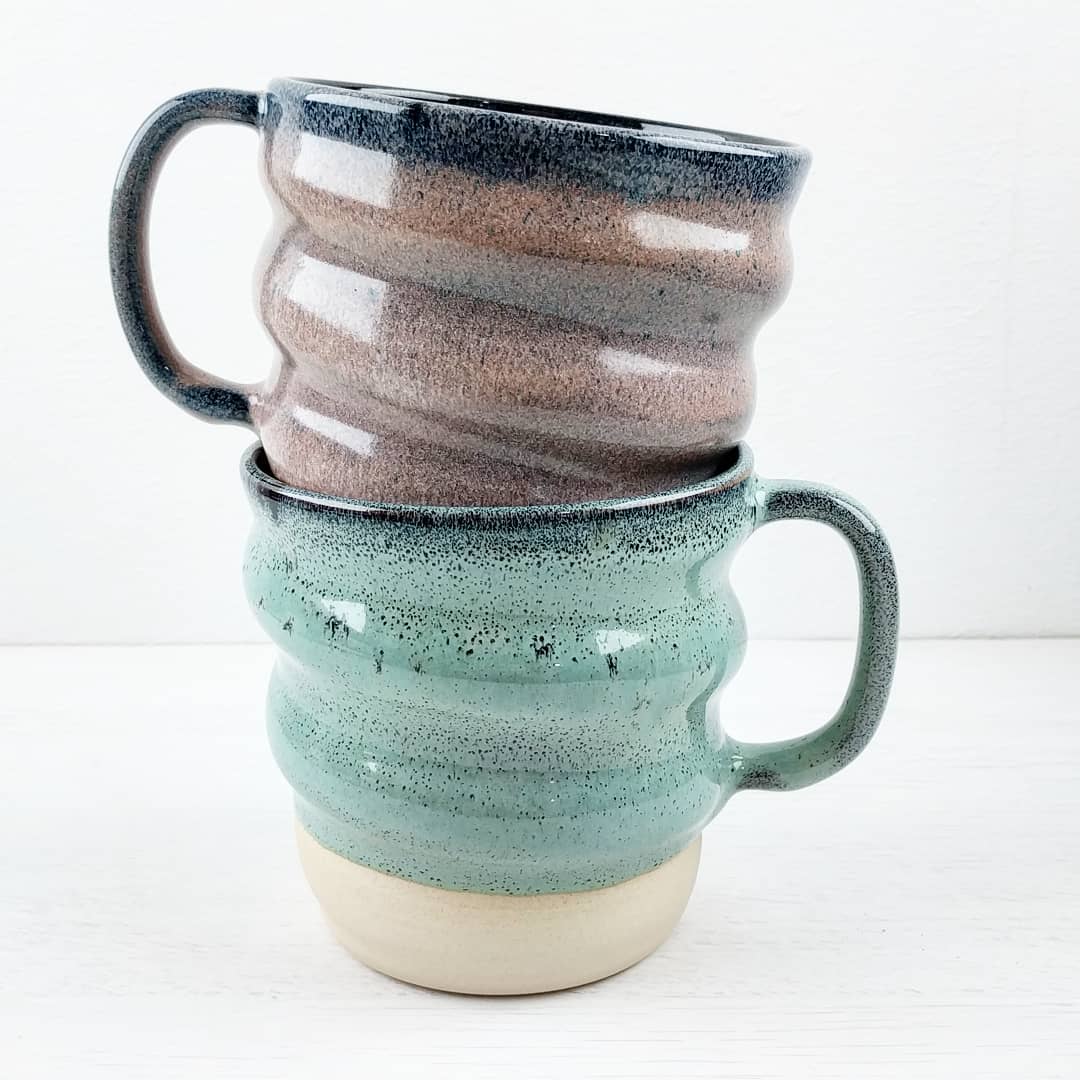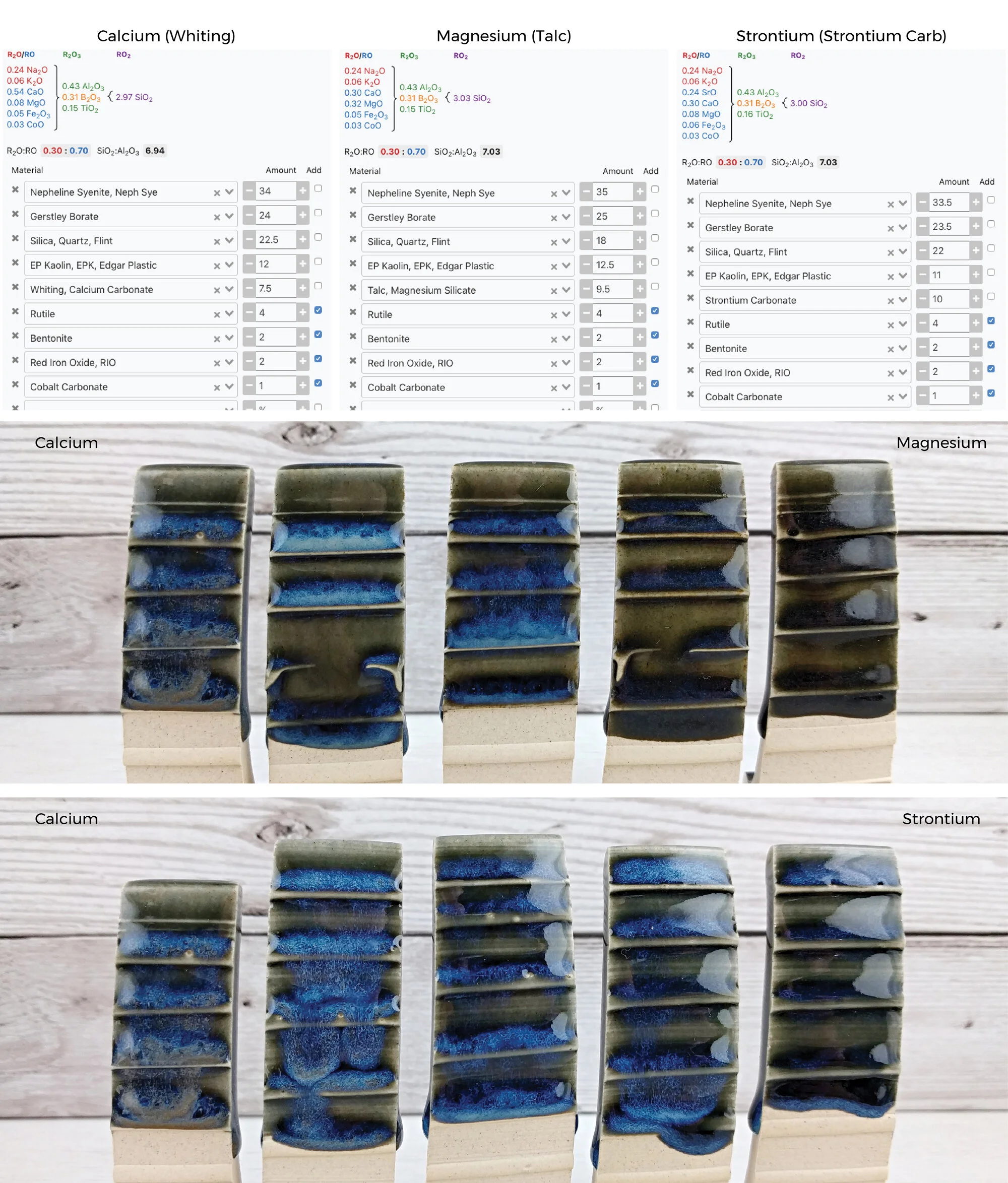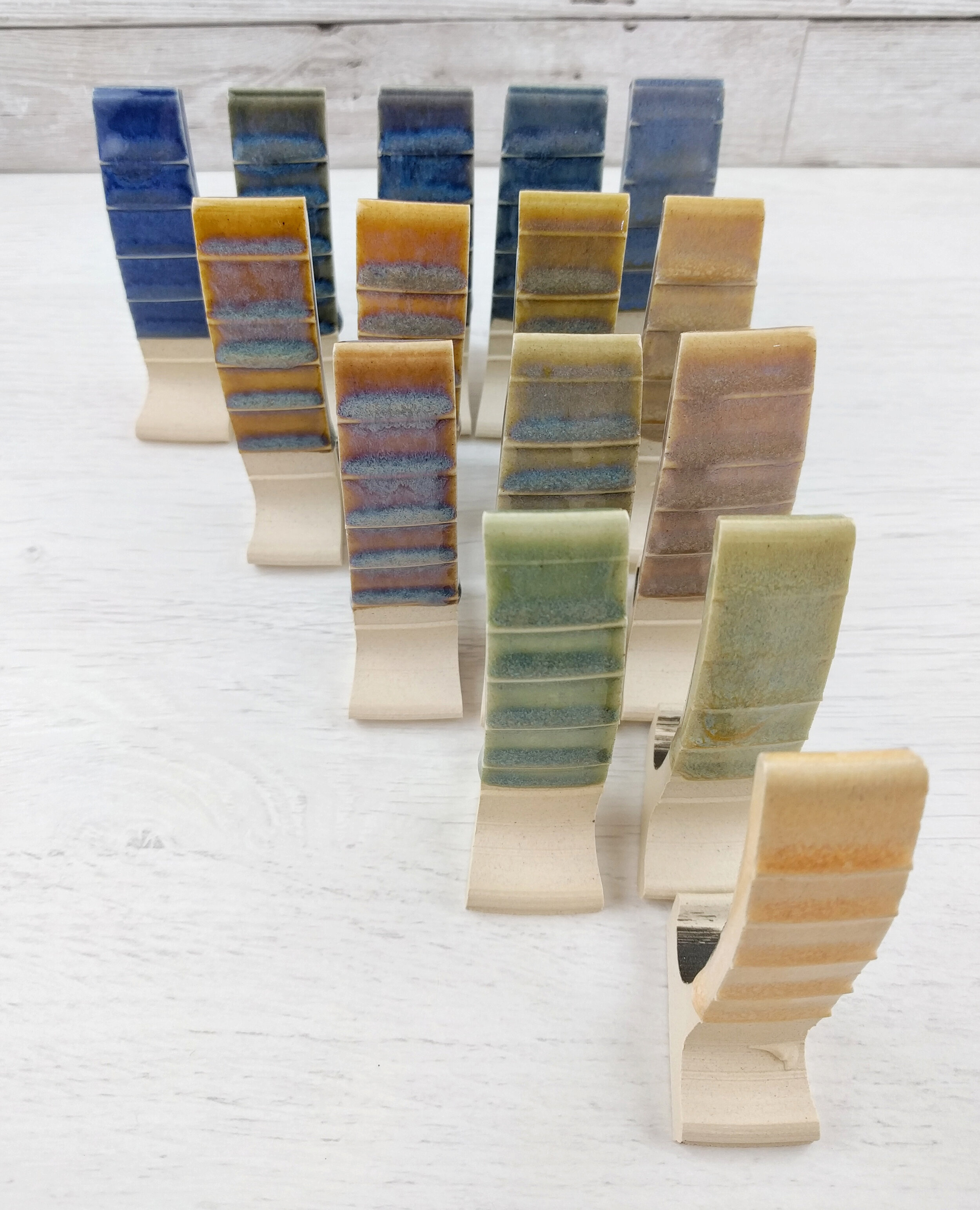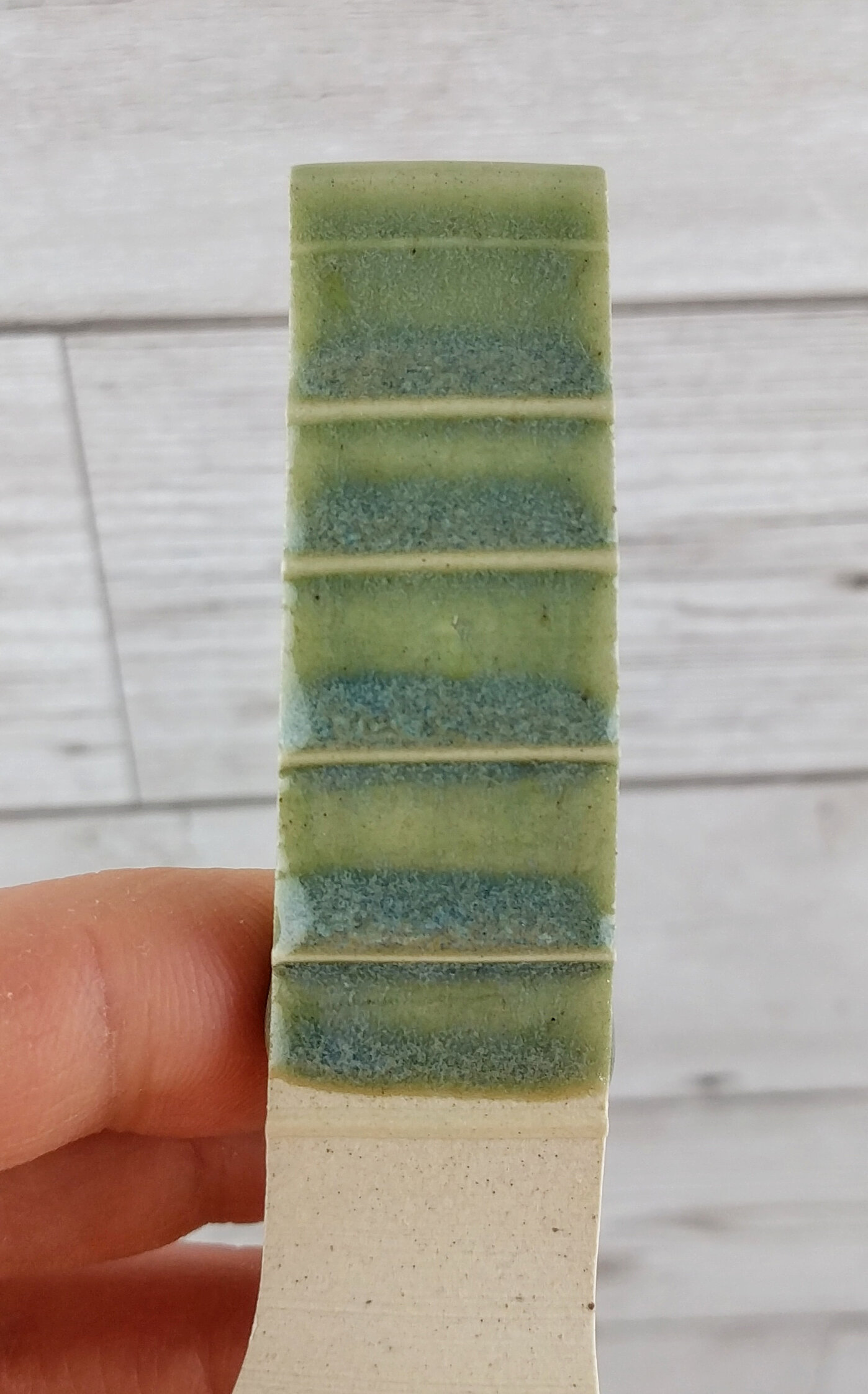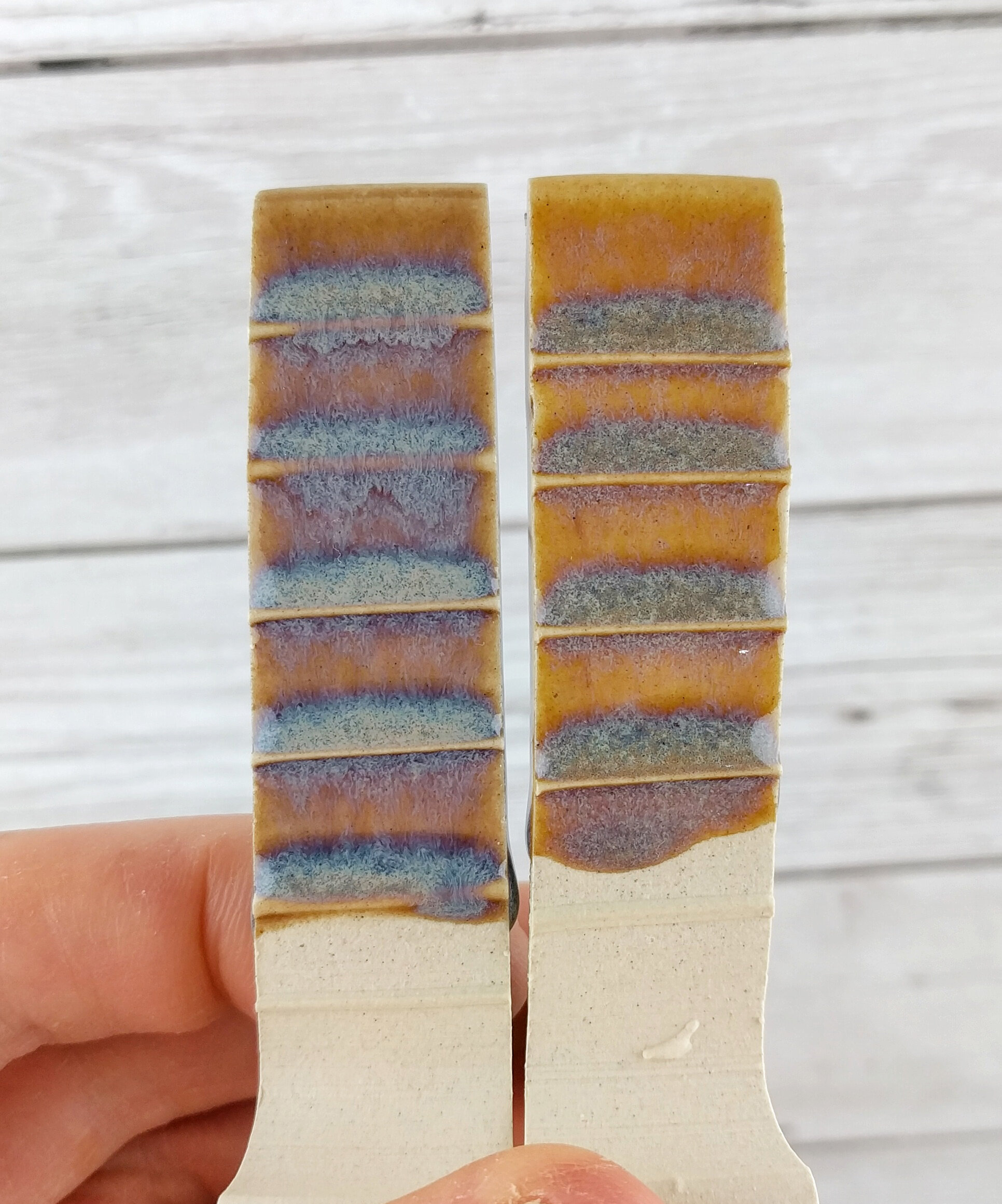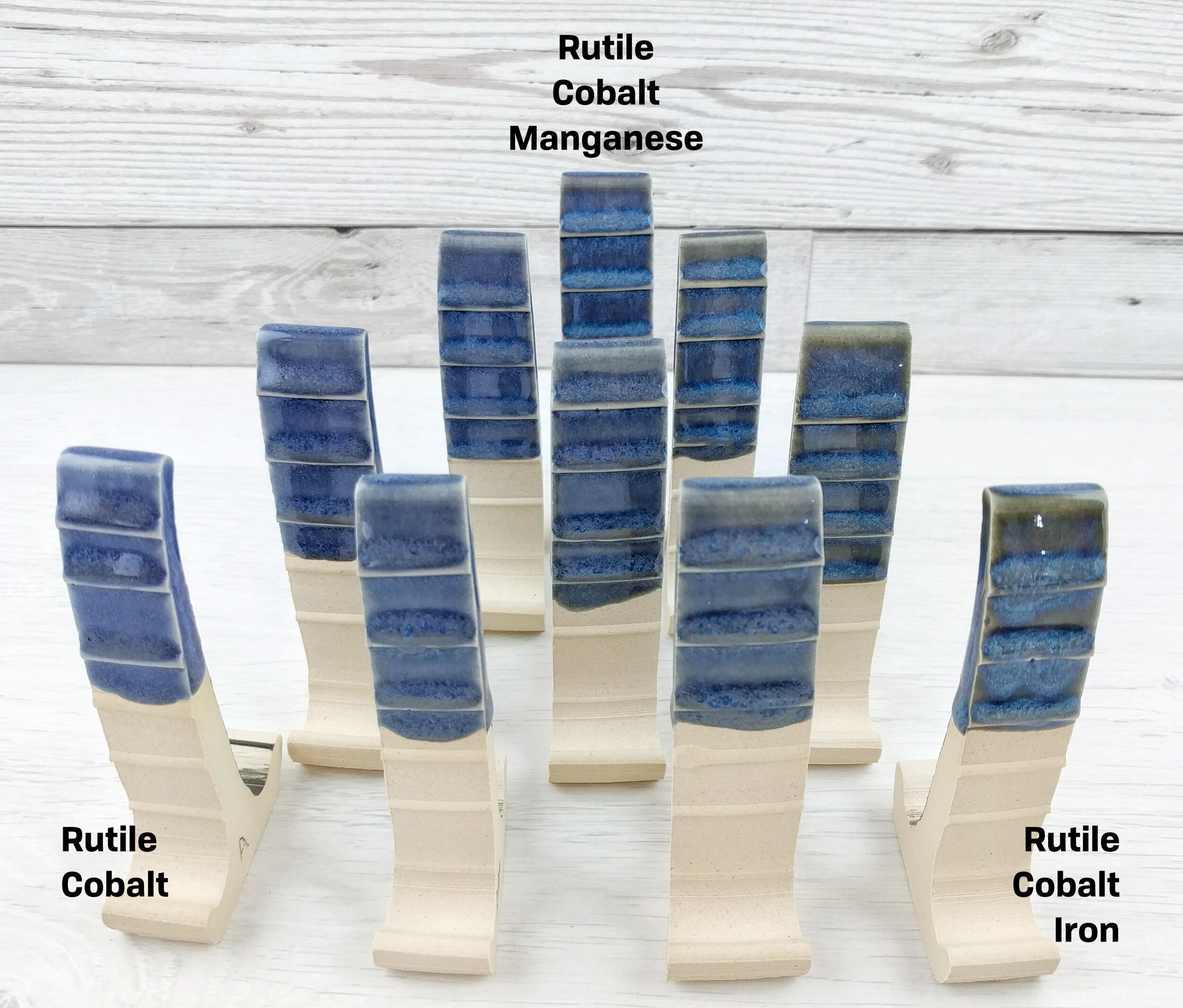Understanding Floating Blues
Most of my glaze combinations use a Floating Blue for at least part of the application. They’re one of the most variable glazes I’ve ever used, as they’re fluid enough to flow and mix with other glazes. That means they sensitive to texture, thickness, clay body, and get even more dramatic in combination with contracting glazes.
You can see a collection of recipes here, but the recurring elements are:
High Boron (0.3-0.4)
High AM Flux (generally 0.4:0.6 - 0.5:0.5)
Reasonably high silica and alumina
Colourants are Rutile, Iron, and Cobalt
For my Ceramic Materials Workshop Advancing Glazes class I wanted to test which of those factors could be changed while keeping the effect. From what I knew of glazes, my guess was that the most relevant would be the boron and the rutile. Those of you who have done any of the CMW classes will probably know that there are a few ways to achieve phase separation (literally where the glaze separates to form different compositions within the glaze), and those are two of the main ones. Also, the boron will increase the fluidity and the rutile will add some opacity.
Fluxes
So my first test was to take my usual Floating Blue, keeping everything else the same (boron, silica, alumina, colourants), and change the flux ratio to 0.3:0.7. Rather than keep the AE fluxes in exactly the same proportions while I did this, I did three versions. One had only calcium added (the Gerstley Borate contributes most of the AE fluxes anyway), one had only magnesium added, and the third had only strontium. I then did a blend between the calcium and each of the other two:
Floating Blues would normally have an added source of calcium (whiting) and magnesium (talc) as well as the calcium and magnesium from the Gerstley Borate. So I found it really interesting to see that increasing the magnesium killed the blue colour where thick and turned the colour where thin browner. The greeny brown colour where thin is one of my least favourite aspects of this Floating Blue, if the application is on the thin side you get a completely different and not at all appealing result.
So I was very pleased to see that switching the added AE flux to strontium turned the thin areas to a blue-grey instead. There’s a slight trade off in the blue where thick, so something close to the middle tile is probably the best compromise.
Boron
The Floating Blues are all high boron, with roughly 2-3x the amount needed to get a glaze to melt at cone 6, which would suggest the extra is there for phase separation and glaze movement.
I did a test (same silica and alumina levels, same fluxes at roughly the same level with the same overall ratio) varying the boron from 50% to 150% of the original level (0.15 to 0.45 via UMF):
As you can see, there’s a sweet spot for boron. The boron is helping the glaze melt as well as forming a glass of its own within the glaze. Too little boron and the glaze is melting but not developing the blue colour, too much boron and the glaze is too fluid to get much variation in thickness even over the texture.
So, I’ll stick with ~0.3 boron for now.
Moving around the map
Those of you familiar with the UMF, either via CMW or Glazy, will have been waiting for this part:

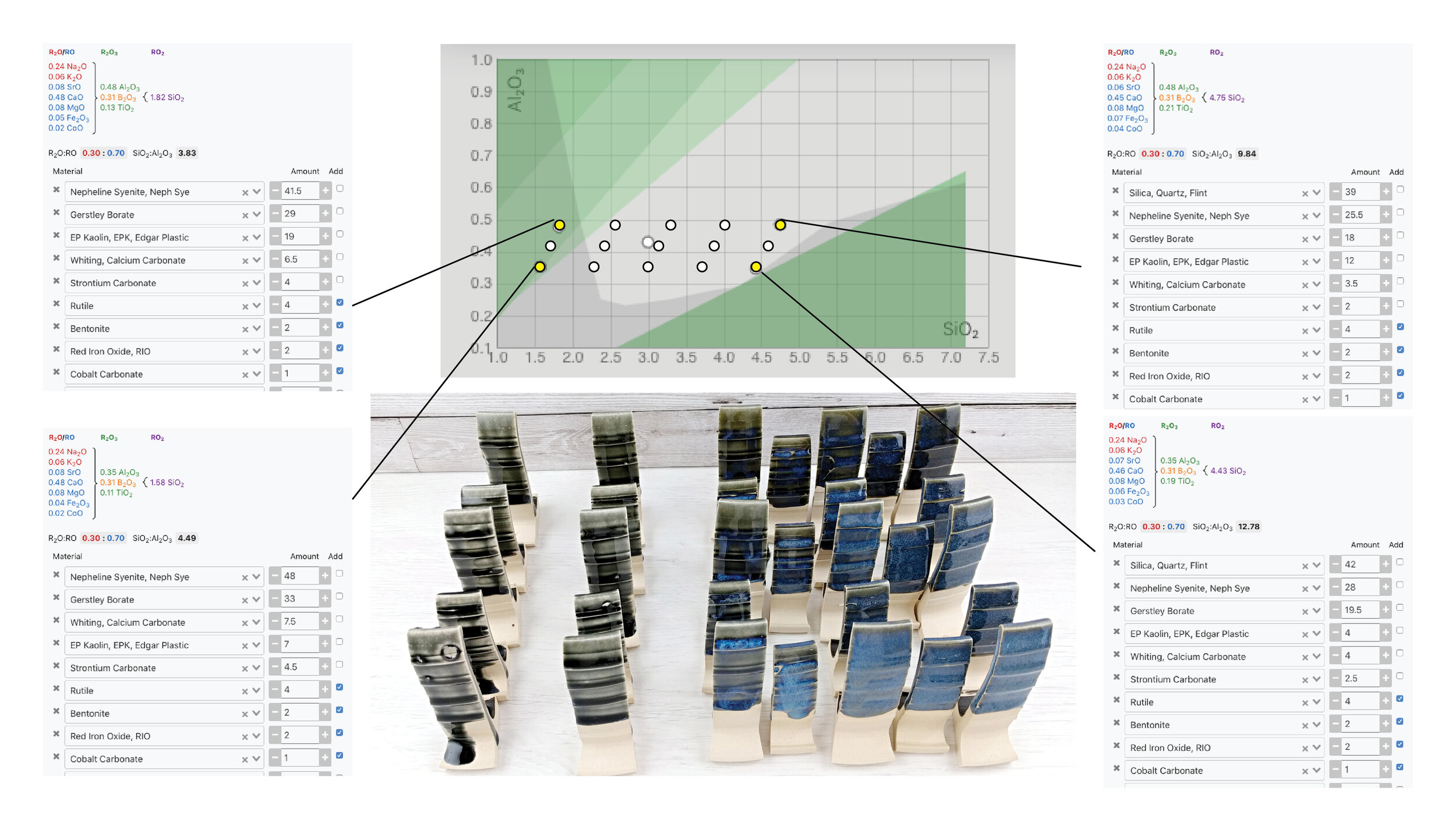
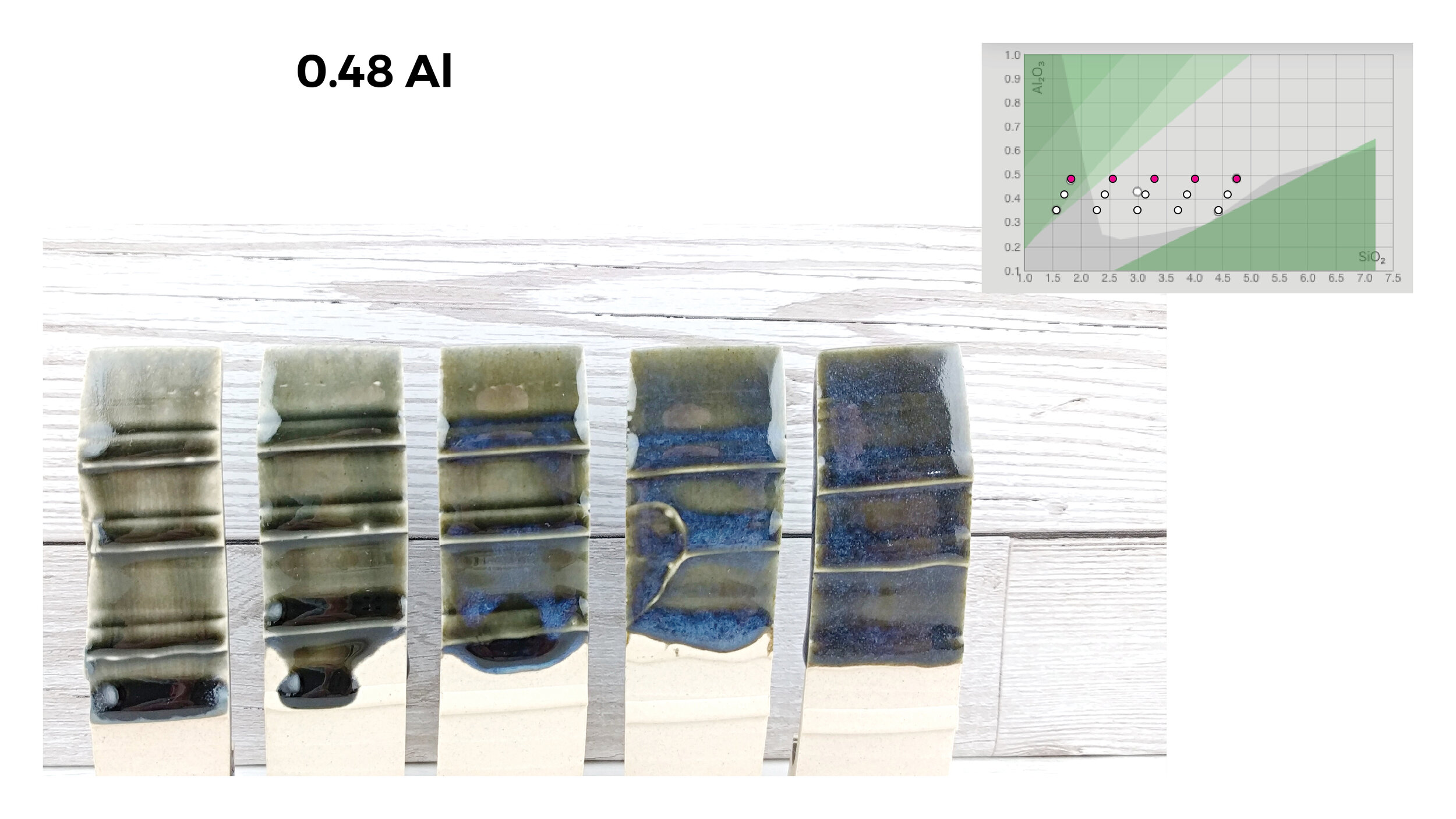

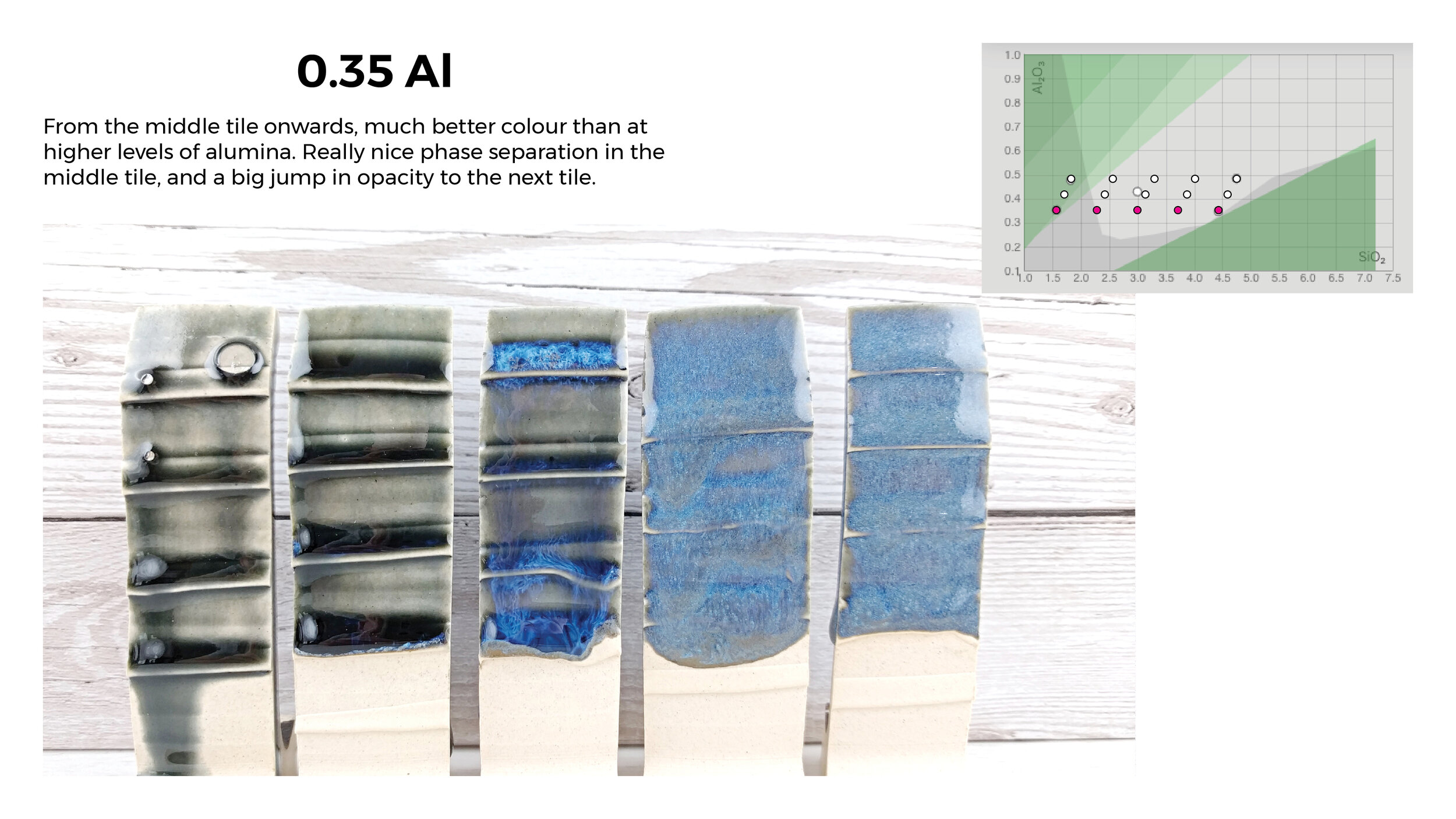
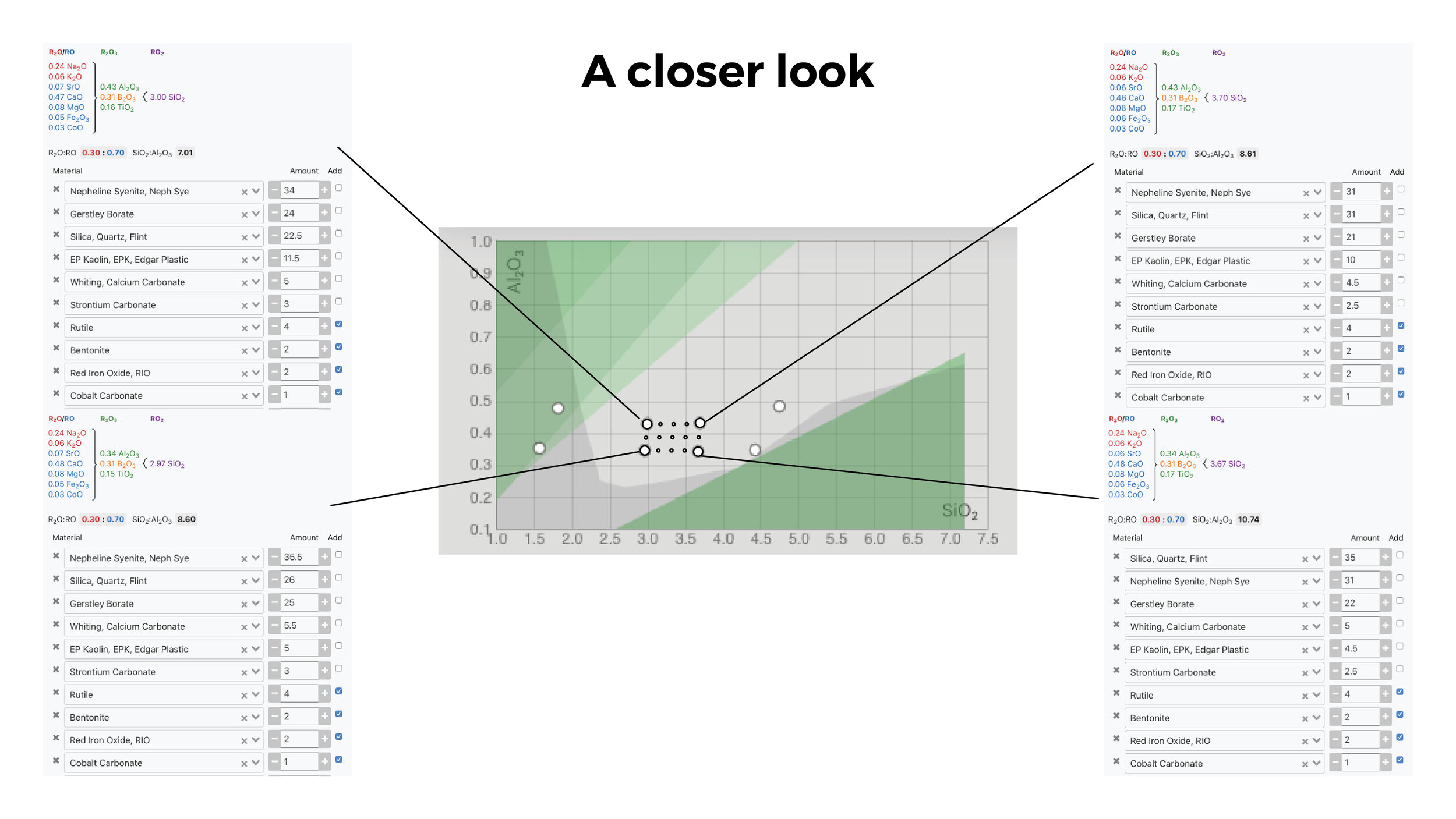
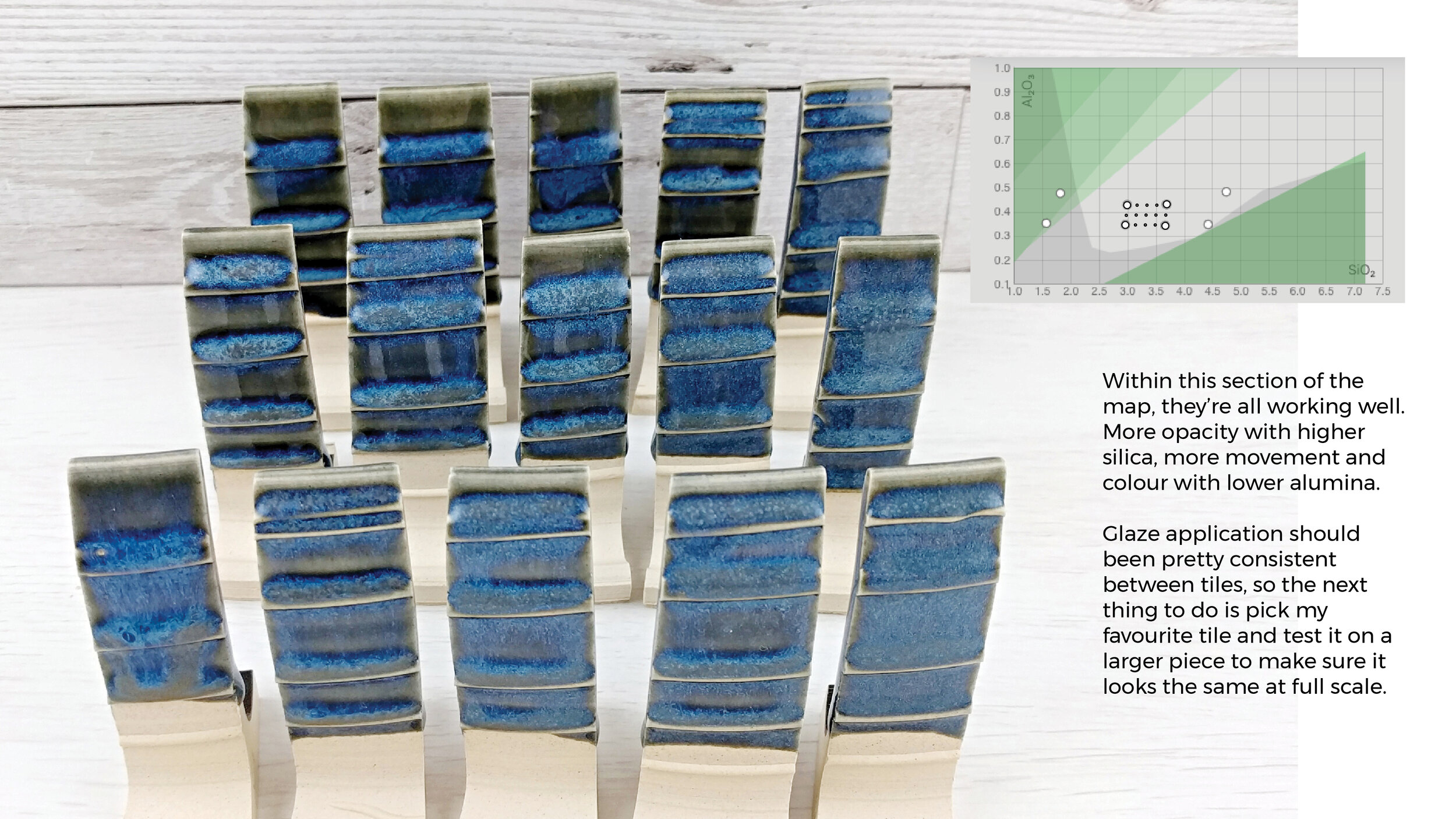
There’s a relatively narrow band of Si:Al ratios that will produce the floating effect, which makes sense as you’re essentially trying to find an optimal compromise of fluidity and opacity. Too much or too little of either and get a glaze of a single colour/effect.
Colourants
The fun part! I did a colourant blend test, all the tiles are the base recipe with rutile and 1/2 other colourants:
The most interesting pair of tiles to me were the final two, the comparison between essentially the default FB colourants (rutile, cobalt, iron) and the version with manganese in place of the iron. I’ve never been too keen on the way floating blues can go greenish brown where thin, and the manganese makes it break to purpley grey instead.
I expanded that test into a blend between the cobalt, cobalt and iron, and cobalt and manganese versions:
I much prefer the manganese corner to the iron, and I think it’s probably the best tile of the set, although the tile with mostly manganese and a little iron was quite nice too.
I’ve tested this manganese switch on my old floating blue recipe and it has a similar improvement, so my main suggestion based on all this would be to try that swap on any FB recipe you use and see if it improves it for you.
But if you want to try the final glaze I ended up with, here’s the full recipe:
I’ll do a follow up with some of the other colour variations that worked well at some point, once I’m fully happy with them.
Full set of the test tiles from this!
If you like this sort of content and want to support the creation of more, I now have a Patreon specifically for it or a page on my website if you just want to make a single donation.
